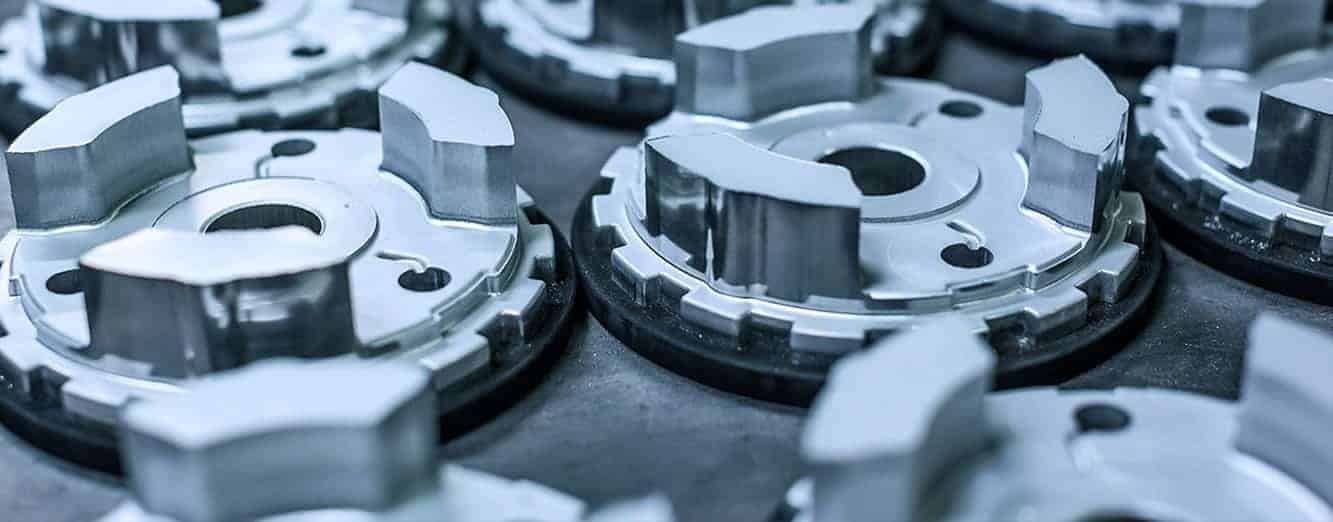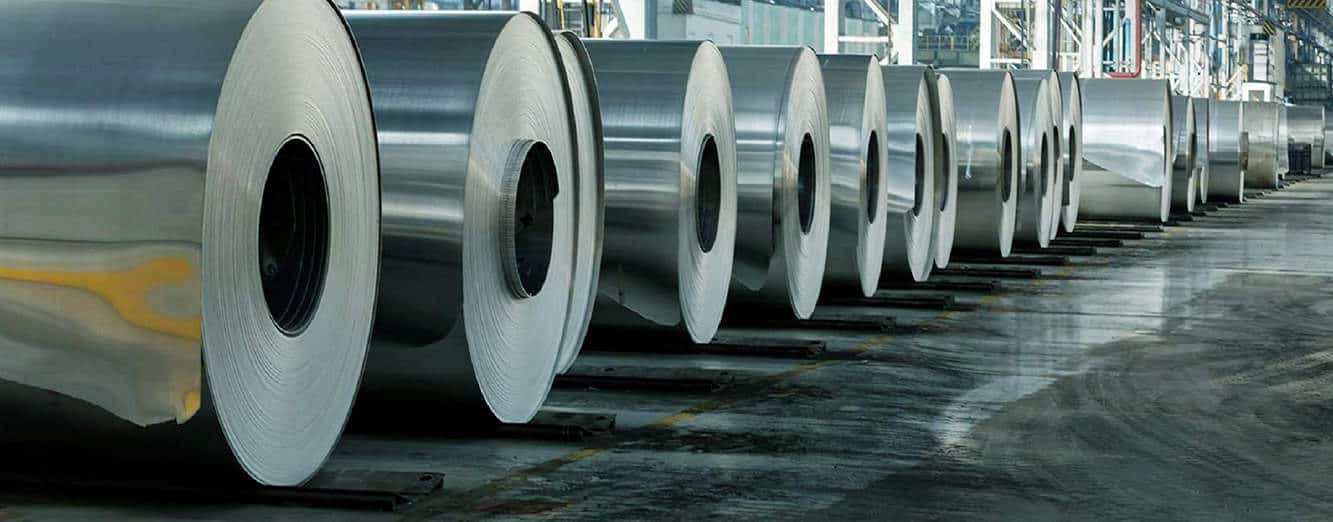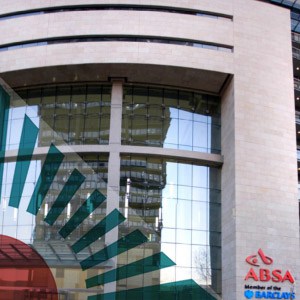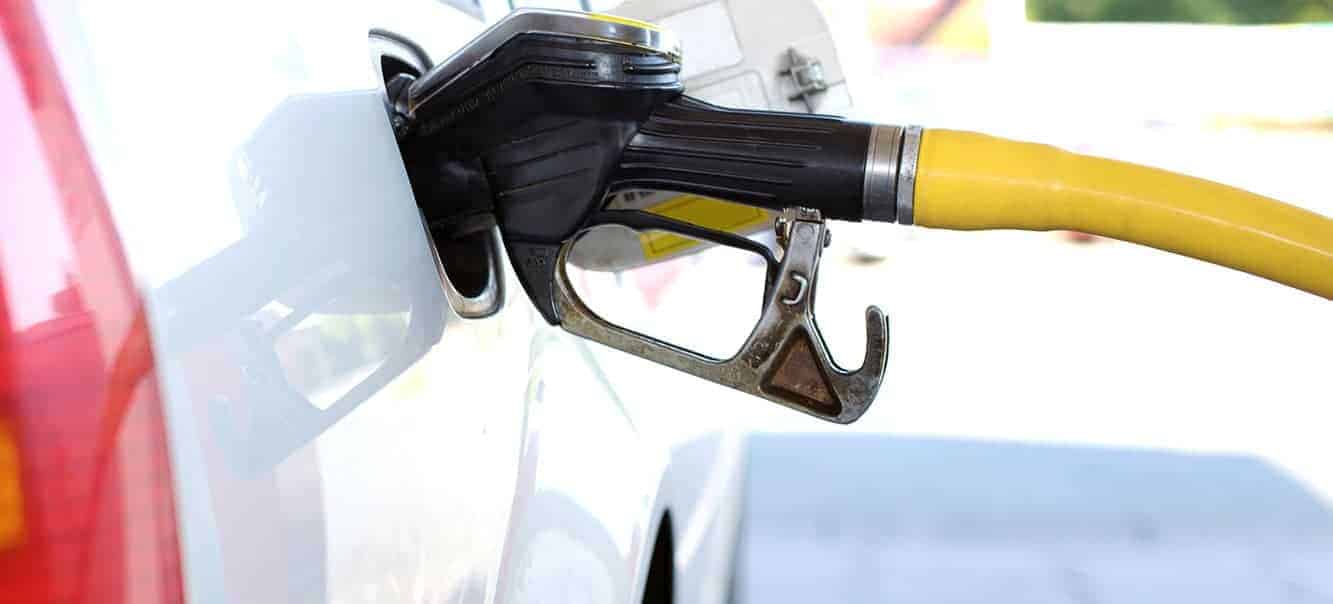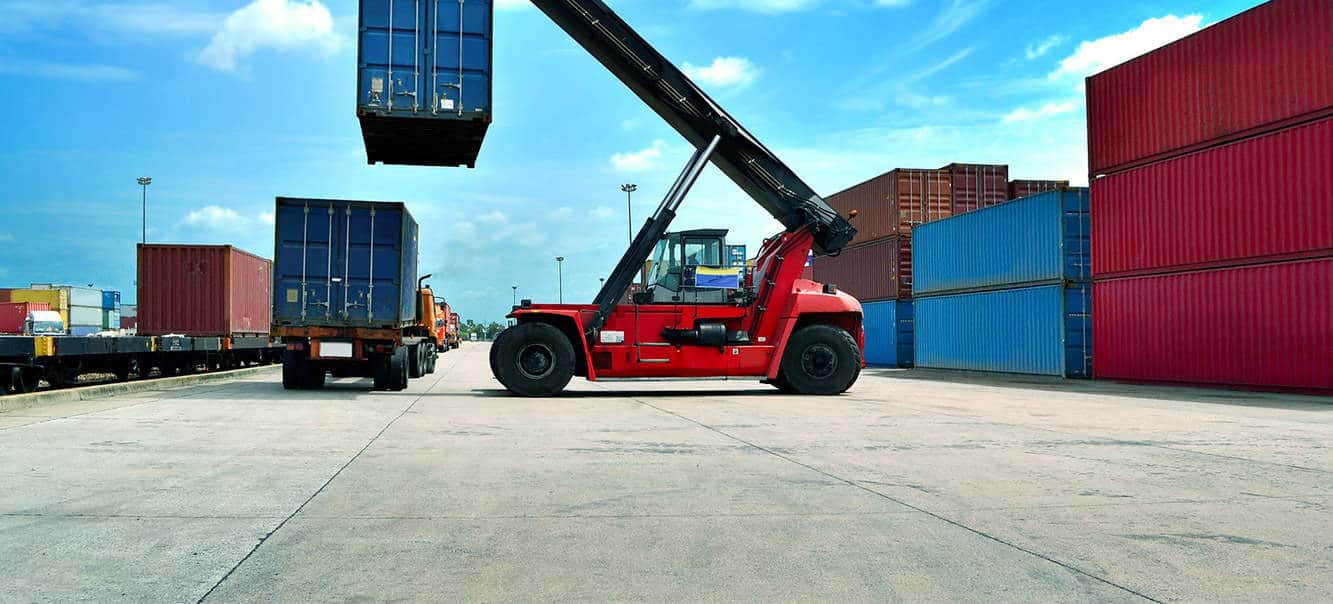SOUTH AFRICA NEEDS INNOVATION TO CAPITALISE ON GROWTH PROMISED BY NEW ERA
Among other imperatives, local industrial manufacturing, including SA’s heterogeneous metals and engineering (M&E) sector, needs innovation to spur industrial growth.
The public has not often viewed machinery and equipment makers as leading innovators, despite the fact that over the years, innovation in industrial manufacturing has had an enormous effect on society.
Automation has transformed factory floors and made it cheaper and faster to produce everything from cars to televisions. Smarter cutting tools are imminent and new technologies for wind turbines and electrical grids are laying the foundations for a shift to cleaner energy.
The recent uptick in agricultural output has been largely supported by innovative equipment and processes, which have made farming more efficient. A growing body of work highlights a strong correlation between innovation and industrial growth at the macro level and also between innovation and firm revenues at the micro level.
Many studies report that the most innovative companies are growing significantly faster.
The difference for industrial manufacturing companies was dramatic, with the most innovative recording growth levels more than four times those of the least innovative companies.
Continuous Government Support In The Form Of Financing Schemes Will Boost Such Initiatives
However, some of the extant bodies of knowledge also acknowledge that not even the most innovative companies will replace their old products and processes with new ones.
This highlights the need for companies to continuously measure the effect of innovation through the vitality index, among others, while also delineating weaknesses and areas for improvement.
Although it is difficult for businesses to build a strong, innovative culture, the pay-offs are high for those that succeed.
Innovation is a much-needed catalyst in manufacturing, including in the M&E subcomponents, especially given the slow evolution in production processes over the years. However, even with the slow progress some companies in the M&E cluster have stepped out of their comfort zones and are becoming pacesetters in innovation and technology.
Some casting companies have embraced modern manufacturing, thus becoming more capital intensive and benefiting from using innovation and technology to improve productivity, quality and the bottom line. But despite these success stories, the M&E cluster is generally considered a laggard in innovation when compared to the more glamorous vehicle-related sector, making the case for modernisation more apparent.
The rapid growth in next-generation technologies presents an opportunity for companies to move with the times by aligning with modern technological developments.
Extant tools to be embraced and adopted include the industrial internet of things, the fourth industrial revolution, artificial intelligence (despite its snag of not being able to explain its own actions), robotics and deep learning (plus big data).
Although these technological threads may never quite converge into something greater than the sum of their parts, analysed separately they offer a glimpse into the varied pioneering tools available.
Pioneering concepts in industrial manufacturing should, therefore, be driven and propagated to a tipping point, as the experience of all globally successful companies underscores the fact that success depends on consistent innovation in order to stay ahead of competition. While innovation presents an opportunity for improved production, the caveat is the potential negative effect on jobs.
Human jobs are being replaced by mechanisation due to advantages to companies, ranging from non-payment of remuneration and benefits, low probability of machines making mistakes through to robots working full production over longer hours.
The prospect of shedding jobs through automation in the short term compounds the existing trade-off between innovation and employment. This catch-22 situation can only be corrected through higher levels of investment, production, capacity utilisation and more modernisation, as solutions of complementing capital with labour are found.
The opportunity exists to expand capacity and ensure that the right skills are developed and absorbed.
The government has identified acute skills shortages and focus areas to improve on relating to technology development in science, technology, engineering and mathematics.
Effective collaboration between the private and the public sectors, including the various government agencies such as the sectoral education and training authorities (Setas), is also important.
Enhanced collaboration could yield excellent results in driving innovation and providing top-end solutions.
While skills development initiatives will address existing challenges, continuous government support in the form of an industrial innovation financing scheme will help boost pioneering initiatives. The scheme can be complemented by an assurance that the inventors’ intellectual properties will be protected.
Accordingly, support from the private sector in preparing the youth of SA for the industries of the future is also vital. There should be a heavy focus on technology and innovation to ensure a mastery of the relevant learning curves. For every investment, a larger proportion should be directed to technology and development because the next frontier is in the digital world.
Conversely, there is a need for experienced manufacturing industry leaders to mentor and guide our erratic youth towards proficiency, in line with an African maxim that the youth can walk faster but the elder know the road.
The Steel and Engineering Industries Federation of Southern Africa supports innovation in the M&E cluster through the annual SEIFSA Awards for Excellence. The federation is piloting an online course in contract price adjustments to complement the current brick-and-mortar offering. These initiatives are in line with reigniting industrial manufacturing.
Innovation as a concept presents an opportunity and a threat, appearing to be an oxymoron of sorts. Still, proactive thinking towards totally embracing innovation — including new cost-cutting technologies, benchmarking standards and methods and expanding research and development – will ensure that companies capitalise on the opportunities, while minimising the threats.
SA’s unemployed but qualified youth, its political will and stability and improving domestic demand are all appealing to international investors. How-ever, success depends on the willingness of companies to take risks and embrace innovation to ensure a bright future for all South Africans.
THERE ARE OPTIONS FOR DOMESTIC COMPANIES EXPORTING OVERSEAS
All these risks emanate from trade across borders, which is subject to highly volatile exchange rates. Foreign exchange risk adds considerable risk to exporters, importers and competitors with imported goods in the local market.
Although financial institutions do play a crucial role in assisting traders in mitigating risks through the provision of trade and supply chain finance solutions, including letters of credit, foreign exchange rate risk is still one of the biggest risk factors faced by businesses.
Typically, overseas buyers of finished products would pay in their local currency, which the South African exporter then exchanges for rand before depositing it in his business bank account. However, while a sale transaction is in progress the value of a foreign currency may change relative to the value of the rand.
For the exporting company in SA, some of its export profits can be reduced, with the company incurring losses or export costs, which can significantly affect margins over time and reduce operating margins.
For example, a South African exporter thinks the pay-off from a trade transaction will be R1m from a shipment the company is exporting to Germany. But by the time the shipments of goods make their way overseas and the buyer takes delivery, the rand may have weakened against the euro and the exporter ends up only getting R910,000, with exchange rate costs accounting for R90,000.
The time lag between when the goods are exported and when the buyer takes possession is, therefore, critical.
Foreign Exchange Rate Risk Is Still One Of The Biggest Risk Factors Faced By Businesses.
If, on the contrary, instead of the rand weakening it appreciates suddenly against the euro, this means that by the time the South African exporter’s goods arrive at their final destination in Europe, the costs to the buyer must have increased. It may cost the buyer more in the local currency or the euro, to equal the rand value upon which the transaction was initially agreed.
The sudden increase in the final selling price to the buyer may even lead to the buyer in Europe no longer wanting to take delivery of the merchandise and in effect cancelling the deal.
Businesses need to constantly monitor currency variability.
A South African company can hedge and maximise benefits from currency volatility by simply opening an account in the country of import, enabling it to deposit the gains from exchanging currencies in an offshore account or in a local bank of the importing country.
This will enable the South African business to have a cash buffer to cater for and offset future depreciation of the rand.
However, local companies must ensure that they comply with the Reserve Bank’s foreign exchange requirements and its annual limits for companies to remit funds out of the country. The downside with this hedging method is that it’s hard to predict accurately when currency fluctuations will occur, or their direction and duration.
Domestic businesses can also take up currency forward contract agreements, which enable them to exchange certain amounts of rand for any foreign currency on a future date.
Forward contracts allow a business to lock in an import purchase of input or export sale of output at the current exchange rate, guaranteeing the proceeds of the transaction at an agreed price. The benefit of this type of agreement is the protection of the business against the risk of a weakening or depreciating rand.
However, the challenge is that if the rand should strengthen afterwards, businesses cannot profit from forward contracts since they are already locked into a mutually agreed exchange rate with the bank.
Another financial instrument available to local businesses is futures contracts, which are a commitment by the business to purchase currency in future at an agreed rate based on current exchange rates.
Although similar to forward contracts, futures contracts have an advantage over the former since there is a secondary market for them.
Companies can opt to sell their contracts to a third party before the agreed term of the contracts is up, or if they have a change of mind about the business opportunity, or if their businesses need more liquidity.
The snag with futures contracts is that they usually allow a range of forward exchange prices rather than a fixed point. Also, the contracts are only offered in fixed amounts, which may make it hard to hedge the exact amount a company may want through futures.
Currency options provide the exporter or importer with an opportunity – but not an obligation – to buy or sell a fixed amount of currency at a set price on or before a chosen date.
Currency options come with a strike price, which is the price at which the currency can be bought or sold. They also have an expiry date, after which the opportunity to purchase the currency option at the agreed price lapses.
However, the caveat is that these currencies or hedging strategies, including common spot deals, come with fees and commissions charged by banks or any party administering the hedging vehicle.
Irrespective of the route chosen, exporters and importers should assess the relevance of hedging against currency risks.
When in doubt, companies are advised to consult with their local banks for flexible and suitable cost-effective options.
STABILITY IN VOLATILE PURCHASING MANAGERS’ INDEX IS KEY IN SUPPORTING POSITIVE EXPECTATIONS
JOHANNESBURG, 1 JUNE 2019 – The Steel and Engineering Industries Federation of Southern Africa (SEIFSA) is concerned about the continuous volatility in the ABSA Purchasing Managers’ Index (PMI) released today, Economist Marique Kruger said today.
Ms Kruger said the data indicate a slight dip in broader manufacturing activity in the country, registering a decrease against the backdrop of a strong performance last month, which had firmly placed the headline PMI above the 50-neutral level.
The latest composite seasonally-adjusted PMI decreased to 49.8 in May 2018 when compared to 50.9 in April 2018. However, of the five sub-indices, the Supplier sub-index increased the most, surging to 51.8 in May 2018 from 47.8 in April 2018, followed by an increase in the New Sales Orders sub-index which also stayed above the 50-neutral level, registering 51.5, buoyed by an improvement in demand and output.
“Given that the PMI is the first data point for the preceding month, it is very important in setting the tone for how producers and relevant stakeholders in the manufacturing sector view the month ahead,” Ms Kruger said.
She added that against the backdrop of an ever-improving business and consumer confidence, stable PMI data provide a complementary platform for improving domestic expectations and the expectation is for the headline PMI to rebound next month.
“A continuous improvement in all sub-indices is also equally imperative towards an enhanced alignment of real data with positive expectations and SEIFSA looks forward to the next PMI release.”
Issued by:
Ollie Madlala
Communications Consultant
Tel: (011) 298 9411 / 082 602 1725
Email: ollie@seifsa.co.za
Web: www.seifsa.co.za
SEIFSA is a National Federation representing 23 independent employers. Associations in the metals and engineering industries, with a combined membership of 1600 companies employing around 200 000 employees. The Federation was formed in 1943 and its member companies range from giant steel-making corporations to formed in 1943 and its member companies range from giant steel-making corporations to micro-enterprises employing few than 50 people.
OPPORTUNITY TO SPONSOR THE SEIFSA GOLF DAY TO TAKE PLACE AT THE HOUGHTON GOLF CLUB ON 31 AUGUST 2018
The Steel and Engineering Industries Federation of Southern Africa (SEIFSA), which represents about 2000 companies in Southern Africa, will hold its 67th annual Golf Day at the prestigious Houghton Golf Club in Houghton, Johannesburg. This is a popular event attended by employers in the metals and engineering sector and some of their customers and suppliers.
This is a very popular Metals and Engineering industry golf day that is often oversubscribed. We expect that that will be much more so this year, which marks SEIFSA’s 75th Anniversary. You don’t want to miss it.
As in the past, once again we expect a full field of 160 golfers to enter this year’s tournament. The golfers include CEOs and MDs, General Managers, Senior Executives, owners of big and small businesses, Commercial Managers and those involved in the Sales and Marketing functions of respective companies and their invited guests.
The competition format is a four-ball alliance with two scores to count, played over 18 holes. The prestigious SL Hodgson Memorial Trophy and other prizes will be awarded at the prize-giving dinner, during which super-talented comedian and actress Krijay Govender will provide entertainment.
I am writing to invite you to promote your brand/company during the SEIFSA Golf Day through one or more of the following sponsorship opportunities. All sponsors’ brands will be displayed prominently on the day and sponsoring companies will be acknowledge on the SEIFSA website and in our bi-monthly magazine, SEIFSA News.
Cost per Four Ball
Members: R5 500
Non-Members: R6 500
Sponsorship Opportunities Include (the indicated amounts exclude VAT):
- 160 x Golf shirts branded with your company’s logo and the SEIFSA logo – R42 000
- 160 x Golf caps branded with your company’s logo and the SEIFSA logo – R12 500
- Caddie Sponsorship – R15 000
- Cart Sponsorship – R15 000
- 160 x Sleeve of branded golf balls – R20 000
- 2 x Branding at the Practice Putting Green – R5000 each
- 1st & 10th Tee Box Branding – R8000 each
- 16 x Watering Hole Sponsorship – R4000
*Sponsors have to purchase the beverage stock from Houghton Golf Club for give-away at a watering hole. Alcohol for give-away is permitted.
- Half-way House Branding – R12 500
Prizes For Winners (Monetary Value Given):
- Nearest to the Pin for Men – R1000 (x2);
- Nearest to the Pin for Ladies – R1000 (x2);
- Longest Drive for Men – R1000 (x2);
- Longest Drive for Ladies – R1000 (x2);
- A Hole-in-One for Men – R3000;
- A Hole-in-One for Ladies – R3000;
- Third-Placed Four Ball – R3500;
- Second-Placed Four Ball – R5000;
- Winning Four Ball – R6 500;
- Lady with the Best Score – R2000.
Items for give-away to each player (160) on arrival (either branded or unbranded), for example:
- Lip ice
- Sun protection lotion
- Energy bars/chocolates
- Markers
- Tees
- Pencils
- Key rings
- Lanyards
- Golf towels
To take up any one of these sponsorship opportunities, please liaise with our Marketing Assistant, Ms Kristen Botha, by phone on (011) 298-9455 or by e-mail on kristen@seifsa.co.za.
Thank you very much, in advance, for your support.
Please see the terms and conditions below:
Terms and Conditions
- Sponsorship packages will be reserved on a first-come, first-served basis. However, these will only be confirmed on receipt of full payment.
- All sponsors are requested to erect their own signage; the Club’s staff will assist wherever possible.
- Sponsors are requested to ensure that all banners are removed on the day of the event as neither SEIFSA nor Houghton Golf Club will be held responsible for lost banners/signage left overnight.
Yours Sincerely
Kaizer M. Nyatsumba
Chief Executive Officer
INCREASE IN CONSUMER INFLATION DOES NOT BODE WELL FOR BUSINESS AND CONSUMERS
Johannesburg, 23 May 2018 – The official inflation number released by Statistics South Africa (Stats SA) does not augur well for businesses and consumers overwhelmed with the recent increases in oil and petrol prices, a depreciating exchange rate and an increase in VAT, Steel and Engineering Industries Federation of Southern Africa (SEIFSA) Economist Marique Kruger said this afternoon.
The timing of the release comes just one day before the South African Reserve Bank (SARB) is set to make an announcement on its interest rate and it may have an impact on the final decision. The annual consumer price inflation (CPI) increased from 3.8% in March 2018 to 4.5% in April 2018. The month-on-month movement in the consumer price index increased by 0.8% in April 2018.
Ms Kruger said: “High petrol prices and the weaker rand will negatively impact on the ease of doing business for companies in the Metals and Engineering (M&E) sector in particular and does not bode well for the broader manufacturing sector. Moreover, over-indebted consumers will have to carry the burden of a consumption tax and an increase in transportation costs, resulting in a possible reduction in demand”.
Ms Kruger added that the rise in inflation is a concern for the M&E sector because, notwithstanding the improvement in business and consumer confidence, the higher petrol price and the volatile exchange rate could contribute to higher inflation in the coming months, thus invariably affecting export competitiveness.
Issued by:
Ollie Madlala
Communications Consultant
Tel: (011) 298 9411 / 082 602 1725
Email: ollie@seifsa.co.za
Web: www.seifsa.co.za
SEIFSA is a National Federation representing 23 independent employers. Associations in the metals and engineering industries, with a combined membership of 1600 companies employing around 200 000 employees. The Federation was formed in 1943 and its member companies range from giant steel-making corporations to formed in 1943 and its member companies range from giant steel-making corporations to micro-enterprises employing few than 50 people.
WEIR MINERALS SHINES AT SEIFSA AWARDS FOR EXCELLENCE DINNER
Johannesburg, 24 May 2018 – The Steel and Engineering Industries Federation of Southern Africa (SEIFSA) has announced the winners of its 4th Annual SEIFSA Awards for Excellence in a ceremony held at the Industrial Development Corporation (IDC) Conference Centre in Sandton this evening.
Weir Minerals took top honours, walking away not only with the 2018 Most Transformed Company of the Year Award, but also with the Environment Stewardship Award. The impressed judges in the most transformed category found that Weir Minerals embraced the challenges of the new, amended Broad-Based Black Economic Empowerment Codes with a firm commitment, using its skills development initiatives as a cornerstone of its transformation agenda.
The company also scooped the Environment Stewardship Award for going out of its way to invest in the environment and successfully implementing greening initiatives in its day-to-day business operations.
The Health and Safety Award Category sought to reward an organisation with the lowest Lost-Time Injury Frequency Rate and an effective system in place for managing risks. Babcock, which was named the winner in this category, not only completed a 1.5 million manhour project without any serious injuries, but it also displayed astounding support for both employees and management through comprehensive training and meticulous risk management.
Judges in the Most Innovative Award category say the quality of entries was extremely high, vindicating SEIFSA’s belief that, even during difficult economic times, some companies in the metals and engineering sector have continued to embrace and leverage innovation in order to remain domestically and internationally competitive.
The judges were impressed by the work done by the winning company, Denwa Engineering, which used its invention in the form of MaMoo Trailer to design and manufacture a product with local material and labour, instead of importing from an overseas-based company at an exorbitant cost and with very little value-add from South Africa.
The Best Corporate Social Responsibility Programme of the Year Award is another category which received a high number of high-quality entries. Commenting on this category, the judges said: “In an environment where the struggle to survive and prosper is challenging on its own, giving back to society becomes even more important. There are many companies in the country that have embraced these challenges and go the extra mile year after year to give back to society and make an impact on the communities in which they operate”.
Not only does the winner in this category, Schneider Electric, comply with legislative and any other requirements, but it genuinely gives back to society in a manner that creates a lasting impact.
There were no entries this year for the Customer Service Award and the Decade of the Artisan Award.
SEIFSA CEO Kaizer Nyatsumba presented the coveted CEO’s Awards. Former Constructional Engineering Association of South Africa Executive Director Louis Breckenridge was honoured with the Lifetime Achievement Award for his contribution to the industry over a 60-year period in various capacities: as an employer, a business owner, CEA Executive Committee member, CEA Chairman, CEA Executive Director, SEIFSA Council Member and resident expert on a host of industry forums and committees.
The Association of the Year Award went to the Light Engineering Industries Association of South Africa for its continued active participation in the various structures within SEIFSA, the Metal Engineering Industries Bargaining Council and the Metal Industries Benefit Funds, as well as other related Trustee Committees. Gibela Rail Transport Consortium was declared winner of the Company of the Year Award for having the highest spend on services provided by SEIFSA throughout its Divisions.
This year the Student of the Year Award was scooped by Moses Negoma, who is currently employed as a Fitter and Turner at Rand Water, for having been a top student at the SEIFSA Training Centre.
Presenting the Award, Mr Nyatsumba said: “Moses was selected from high-achieving trainee artisans in all 10 trades offered at the SEIFSA Training Centre, making him the best among more than 300 students at the training centre”.
Mr Nyatsumba commended all the companies that had entered the awards and congratulated the winners in the respective categories.
“SEIFSA maintains that it is critically important for those companies which excel at what they do to get the acknowledgement and recognition they deserve from industry peers,” he said.
Mr Nyatsumba also encouraged all companies operating in the metals and engineering sector to continue to work hard towards excelling and providing the sector with examples of excellence.
Issued by:
Ollie Madlala
Communications Consultant
Tel: (011) 298 9411 / 082 602 1725
Email: ollie@seifsa.co.za
Web: www.seifsa.co.za
SEIFSA is a National Federation representing 23 independent employers. Associations in the metals and engineering industries, with a combined membership of 1600 companies employing around 200 000 employees. The Federation was formed in 1943 and its member companies range from giant steel-making corporations to formed in 1943 and its member companies range from giant steel-making corporations to micro-enterprises employing few than 50 people.
VOTE TAKEN TO GAZETTE THE 2017-2020 MAIN AGREEMENT
Following the signing of the Settlement Agreement and the commitment contained therein to prepare a Consolidated Main Agreement for submission to the Department of Labour, with a request that it be gazetted and extended to non-parties, a Drafting Committee comprising of representatives of the Parties assisted by their respective legal representatives has completed this task.
The Consolidated Main Agreement incorporates all the amendments agreed upon between the parties during the 2011-2014 and 2014-2017 Main Agreement negotiations and the recently-concluded amendments arising out of last year’s Main Agreement negotiations.
An important legal requirement in preparing a collective agreement for gazettal and extension is the incorporation of the parties’ industry membership details. This requirement, contained in Section 49 of the Labour Relations Act (LRA), requires the Bargaining Council to work collaboratively with all the parties and the Department of Labour so that the results of the membership verification report can be incorporated into the request for the gazettal and extension of the Main Agreement. To view the Determination by the Department of Labour, please click here.
At a Bargaining Council Management Committee Meeting held today, the 2017-2020 Consolidated Main Agreement – concluded between the 21 SEIFSA-affiliated Employer Associations and the industry’s five Trade Unions – was adopted, in line with the Bargaining Council’s Constitution and Section 32 of the Labour Relations Act, as a Collective Agreement concluded in a Bargaining Council, with a request that the Minister of Labour be petitioned to extend the agreement to all non-party employers and employees from a date to be determined by the Minister.
Once gazetted, the Main Agreement will set new minimum standards for all employers and employees in the metals and engineering industries.
IT IS IMPORTANT FOR COMPANIES INVOLVED IN FOREIGN TRADE TO CONSIDER THE OPTIONS AVAILABLE TO THEM TO PROTECT THEIR BOTTOM LINE
It is important for companies involved in foreign trade to consider the options available to them to protect their bottom line, writes Michael Ade.
Despite the continuous recovery in global commodity prices from the lows recorded in December 2015, it is still too soon to tell whether the positive trajectory will continue. This is due to on-going efforts by China to re-balance its economy and the protectionist policy of the US on steel and aluminum imports, which may just be a precursor to enhanced trade wars which would have dire consequences for all.
The imposition of an import tariff on all steel products by the US, a leading global steel importer, could lead to a fall in international steel prices due to a combination of lower demand and a corresponding oversupply from China. A potential trade war between China and the US has the potential of constricting an up-tick in world growth, overlapping to temporary exchange rate shocks, as capital flows respond to changes in expected returns.
Domestically, production in the metals and engineering (M&E) sub-components continued to be variable and local steel consumption is still low, compelling many businesses to increasingly consider exploring various export markets within and without the African continent. However, exporting into foreign markets and, indeed, international trade is significantly different to domestic trade, given the number of factors such as payment, performance and transportation risks to which companies are exposed. All these risks emanate from trade across borders which are subject to highly volatile exchange rates. Foreign exchange risk, therefore, adds considerable threat to exporters, importers and competitors with imported goods in the local market.
Although financial institutions do play a crucial role in assisting traders in mitigating risks through the provision of trade and supply chain finance solutions, including Letters of Credit, foreign exchange rate risk is still one of the biggest risk factors faced by businesses. Typically, overseas buyers of finished products would pay in their local currency, which the South African exporter then exchanges for the rand, before depositing it in his business bank account. However, while a sale transaction is in progress, the value of a foreign currency may change relative to the value of the rand.
For the exporting company in South Africa, this means that some of its export profits can be reduced in the course of exchanging currency during the trade transaction, with the company incurring losses or exports costs, which can significantly impact on margins over time, and reduce operating margins.
Hypothetically, a South African exporter thought that the pay-off from a trade transaction would be R1,000,000 from a shipment the company is exporting to Germany. However, by the time the shipments of goods make their way overseas and the buyer takes delivery, the rand may have weakened against the Euro and the exporter ends up only getting R910,000, with exchange rate costs accounting for R90,000. The time lag between when the goods are exported and when the buyer takes final possession of the goods is, therefore, very critical.
If, on the contrary, instead of the rand weakening, it appreciates suddenly against the Euro, this means that by the time the South African exporter’s goods arrive at their final destination in Europe, the costs to the buyer must have increased. It may cost the buyer more in the local currency or the Euro, to equal the rand value upon which the transaction was initially agreed upon. The sudden increase in the final selling price to the buyer, due to the appreciation of the rand, may even lead to the buyer in Europe no longer wanting to take delivery of the merchandise and effectively cancelling the deal. Businesses, therefore, need always to monitor currency variability.
A South African company can hedge and maximise benefits from currency volatility by simply opening an account in the country of import, enabling it to deposit the gains from exchanging currencies in an offshore account or in a local bank of the importing country. This will enable the SA business to have a cash buffer to cater for and offset future depreciation of the rand. However, local companies must ensure that they comply with the Reserve Bank’s foreign exchange requirements and its annual limits for companies to remit funds out of the country. The downside with this hedging method is that it’s hard to predict accurately when currency fluctuations will occur, its direction and duration.
Domestic businesses can also take up currency forward contracts agreements which specifically enable them to exchange certain amounts of rands for any foreign currency on a future date. Forward contracts allow a business to lock in an import purchase of input or export sale of output at the current exchange rate, guaranteeing the proceeds of the transaction at a price agreed upon. The benefit of this type of agreement is the protection to the business against the risk of a weakening or depreciating rand. However, the challenge is that if the rand should strengthen afterwards, businesses cannot profit from forward contracts since they are already locked into a mutually-agreed exchange rate with the bank.
Another financial instrument available to local businesses is futures contracts, which are a commitment by the business to purchase currency in the future, at a rate agreed upon rate based on current exchange rates. Although similar to forward contracts, futures contracts have an advantage over the former since there is a secondary market for them. Companies can opt to sell their contracts to a third party before the agreed term of the contracts are up or if they have a change of mind in pursuing the business opportunity or if their businesses need more cash liquidity. The slight snag with futures contracts is that they usually allow a range of forward exchange prices rather than a fixed point. Also, the contracts are only offered in fixed amounts, which may make it hard to hedge the exact amount a company may want through futures.
Currency options as a financial instrument provide the exporter or importer with an opportunity – but not an obligation – to buy or sell a fixed amount of currency at a set price, on or before a chosen date. Currency options come with a “strike price”, which is the price at which the currency can be bought or sold. They also have an expiry date, after which the opportunity to purchase the currency option at a price agreed upon elapses.
However, the caveat is that each of these currencies or hedging strategies, including common spot deals, comes with fees and commissions charged by the banks or any relevant party administering the hedging vehicle. Irrespective of the route chosen, exporters and importers should assess the relevance of hedging against currency risks, before taking up any of the hedging options available. When in doubt, companies are advised to consult with their local banks for flexible and suitable cost-effective options.
Dr Michael Ade is the Chief Economist of the Steel and Engineering Industries Federation of Southern Africa.
SEIFSA ENCOURAGED BY THE CONTINUOUS IMPROVEMENT OF THE METALS AND ENGINEERING OUTPUT IN MARCH 2018
JOHANNESBURG, 10 MAY 2018 – The Steel and Engineering Industries Federation of Southern Africa (SEIFSA) is encouraged by the continuous improvement in production in the metals and engineering (M&E) sector, given that this is the third consecutive annual acceleration from January 2018, the Federation said today.
“The progress shows that local businesses are gradually responding to the generally improving consumer and business confidence, which is characteristic of the Ramaphosa era. Hitherto, the concern had generally been that despite improving sentiments from the start of the year, supply-side data as evidenced by lead economic indicators were still nondescript.
“Today’s output data for the M&E cluster is encouraging, considering its significance to gross domestic product and the fact that the economy cannot entirely depend on positive sentiments to expand,” said SEIFSA Economist Marique Kruger.
The latest preliminary seasonally-adjusted production data for the M&E sector published by Statistics South Africa (Stats SA) today indicated that output improved to 10,3 percent in March 2018, on a year-on-year basis, when compared to March 2017. The performance is recorded despite a reduction in production in the broader manufacturing sector, which decreased by 1,3 percent in March 2018, compared to March 2017. Similarly, the M&E sector performed well on a month-to-month basis, registering a growth of 9,0 percent in March 2018 when compared to February 2018, in line with the broader manufacturing which increased by 1,3 percent.
“Businesses in the cluster should build on this performance by capitalising on existing initiatives aimed at igniting domestic growth by both the public and private sectors, expand output, boost sales and margins and possibly claw back lost jobs,” Ms Kruger said.
She added that SEIFSA expects a continuous improvement in output in the M&E sector, given an up-tick in the composite purchasing managers index (PMI), which is a lead indicator for the sector. She said the constant improvement of the business activity sub-index of the PMI also provides solace to potential investors and stakeholders.
“Accordingly, higher productivity and better capacity utilisation is necessary for businesses to cushion the negative effects of volatile and increasing input costs,” said Ms Kruger.
Issued by:
Ollie Madlala
Communications Consultant
Tel: (011) 298 9411 / 082 602 1725
Email: ollie@seifsa.co.za
Web: www.seifsa.co.za
SEIFSA is a National Federation representing 23 independent employers. Associations in the metals and engineering industries, with a combined membership of 1600 companies employing around 200 000 employees. The Federation was formed in 1943 and its member companies range from giant steel-making corporations to formed in 1943 and its member companies range from giant steel-making corporations to micro-enterprises employing few than 50 people.
SEIFSA ENCOURAGED BY POSITIVE REACTION TO BOUYANT CONSUMER AND BUSINESS CONFIDENCE
JOHANNESBURG, 2 MAY 2018 – The Steel and Engineering Industries Federation of Southern Africa (SEIFSA) is encouraged by the improvement in the Absa Purchasing Managers Index (PMI) released today, with the data showing that businesses are slowly responding to a buoyant consumer, business and investor confidence.
SEIFSA Chief Economist Michael Ade said that, following Cyril Ramaphosa’s election in December as new ANC president, domestic economic data were expected to catch up with growing domestic sentiments resulting from the Nasrec conference. He said that was more so after Mr Ramaphosa assumed the country’s presidency.
However, Dr Ade cautioned that, in addition to positive consumer and business confidence, there was a need for an equal up-tick in demand and supply side dynamics.
“SEIFSA is, therefore, encouraged by the improvement in the latest PMI numbers, which had previously dipped below the 50-neutral level, which separates expansion from contraction, in February 2018,” Dr Ade said.
The latest seasonally-adjusted preliminary PMI data show that the composite PMI improved to 50.9 in April 2018, from a lower 46.9 in March 2018. However, the headline PMI data still exhibit a lot of uncertainty and the volatility is driven by volatile input prices, because of factors affecting supply, including the variable exchange rate. Enhanced volatility is also evident in the oscillating performance of the business activity, inventory levels and new sales orders sub-indices of the composite PMI index, which have been largely unpredictable.
“Given that the PMI is the first data for the month, the updated information provides a good preview and insight into the level of economic activity to be undertaken by production and procurement managers, including other key stakeholders of businesses in the month. The data generally provide promising signs, and we are hopeful for a continuous improvement in the composite index in the forthcoming periods,” Dr Ade concluded.
Issued by:
Ollie Madlala
Communications Consultant
Tel: (011) 298 9411 / 082 602 1725
Email: ollie@seifsa.co.za
Web: www.seifsa.co.za
SEIFSA is a National Federation representing 23 independent employers. Associations in the metals and engineering industries, with a combined membership of 1600 companies employing around 200 000 employees. The Federation was formed in 1943 and its member companies range from giant steel-making corporations to formed in 1943 and its member companies range from giant steel-making corporations to micro-enterprises employing few than 50 people.

